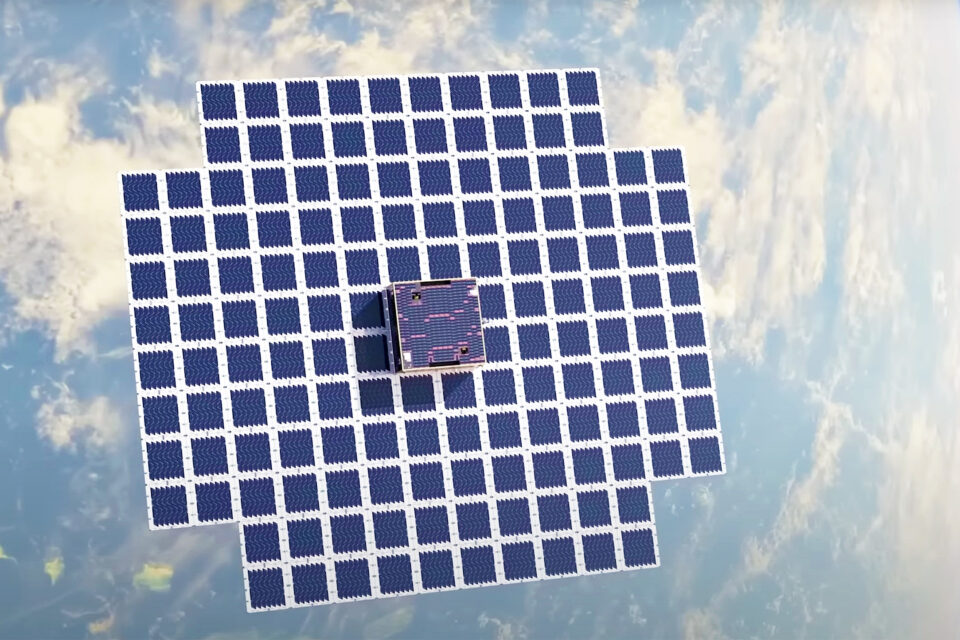See the satellite constellations posing risks to night sky observations

There are groups of large satellites orbiting the Earth that can negatively impact night sky observations and radio astronomy. These satellite “constellations” are upsetting skywatchers around the world. An international team of concerned scientists recently published a new research paper addressing this issue.
Introducing the BlueWalker 3
As a prototype satellite, the BlueWalker3 is designed to be a part of the AST SpaceMobile planned satellite constellation. The goal of the satellite is to provide broadband or mobile services across the planet. However, it may have other unintended effects on astronomy.
The full research paper, published in the Nature Journal, noted that the data obtained from the initial observation of the BlueWalker 3 after its launch confirms it to be one of the brightest objects in the sky.
These observations are consistent with the findings of other astronomers worldwide, including New Zealand, Mexico, the United States, and Chile.
Using the same data, experts estimated the satellite’s trajectory over time, hoping that the information could help locate and avoid them during orbiting. However, results suggest that it will take more than positional masking to decisively deal with the BlueWalker’s outstanding brightness.
Satellite constellations and radio astronomy
According to Mike Peel, co-lead of CPS’s Sathub, the proposed ‘new comprehensive, worldwide, coordinated, and public observing initiative,’ may render the present protection from radio interference inadequate. This is due to the closeness between the BlueWalker 3 transmission wavelength bands and the radio astronomy bands.
“Further research is therefore required to develop strategies for protecting existing and upcoming telescopes from the numerous satellites planned for launch over the next decade, ” said Mike.
The night sky remains crucial
On the importance of the night sky, Dave Clements, a scientist at the Imperial College London Department of Physics, explained that the night sky provides an enabling environment for experiments that cannot be performed in regular terrestrial laboratories. We must protect our night skies for this and many other reasons.
“The pristine night sky is also an important part of humanity’s shared cultural heritage and should be protected for society at large and for future generations,” Dave added.
Various companies worldwide have proposed similar satellite constellations. However, due to their proximity to Earth and considerable size, concerns are rising about their impact on astronomers’ ability to study celestial bodies.
Coexisting with satellite constellations
Satellite constellations are crucial to global communications. However, scientists have maintained that they can potentially interfere with astronomical studies, thus preventing a proper understanding of the cosmos.
As recommended by the researchers in their paper, there is a way out. They suggest deploying these satellite constellations while ensuring minimal interference with astronomical observations. This approach would allow humanity continued progress in the never-ending quest to understanding the cosmos.
Click here to see video of a SpaceX satellite constellation train.
More about satellite constellations
As we learned above, satellite constellations refer to groups of satellites working together in a coordinated manner. Unlike solitary satellites, these constellations function in harmony to provide widespread coverage and continuous service.
Companies like SpaceX, with its Starlink project, and OneWeb aim to deploy large numbers of satellites into low Earth orbit (LEO). Their goal? To provide high-speed internet access across the globe, especially in areas where traditional internet remains inaccessible.
However, while these satellite constellations promise groundbreaking advancements in global communication, they also pose challenges. Skywatchers and astronomers express concerns over the potential for these satellites to interfere with stargazing and astronomical research.
The bright reflections from these satellites can obstruct the view of distant stars and galaxies, making the night sky a little less pristine for observers on Earth.
In response to these concerns, companies are actively seeking solutions. SpaceX, for example, is experimenting with satellite coatings that reduce reflectivity. Meanwhile, international space agencies and organizations are discussing potential guidelines and regulations to balance technological advancement with the preservation of our night skies.
In summary, as satellite constellations expand our communication capabilities, they also highlight the need for thoughtful integration of new technology into the shared space above us. Ensuring a harmonious coexistence between these modern marvels and the natural wonders of our universe remains a priority for both tech innovators and the global community.









